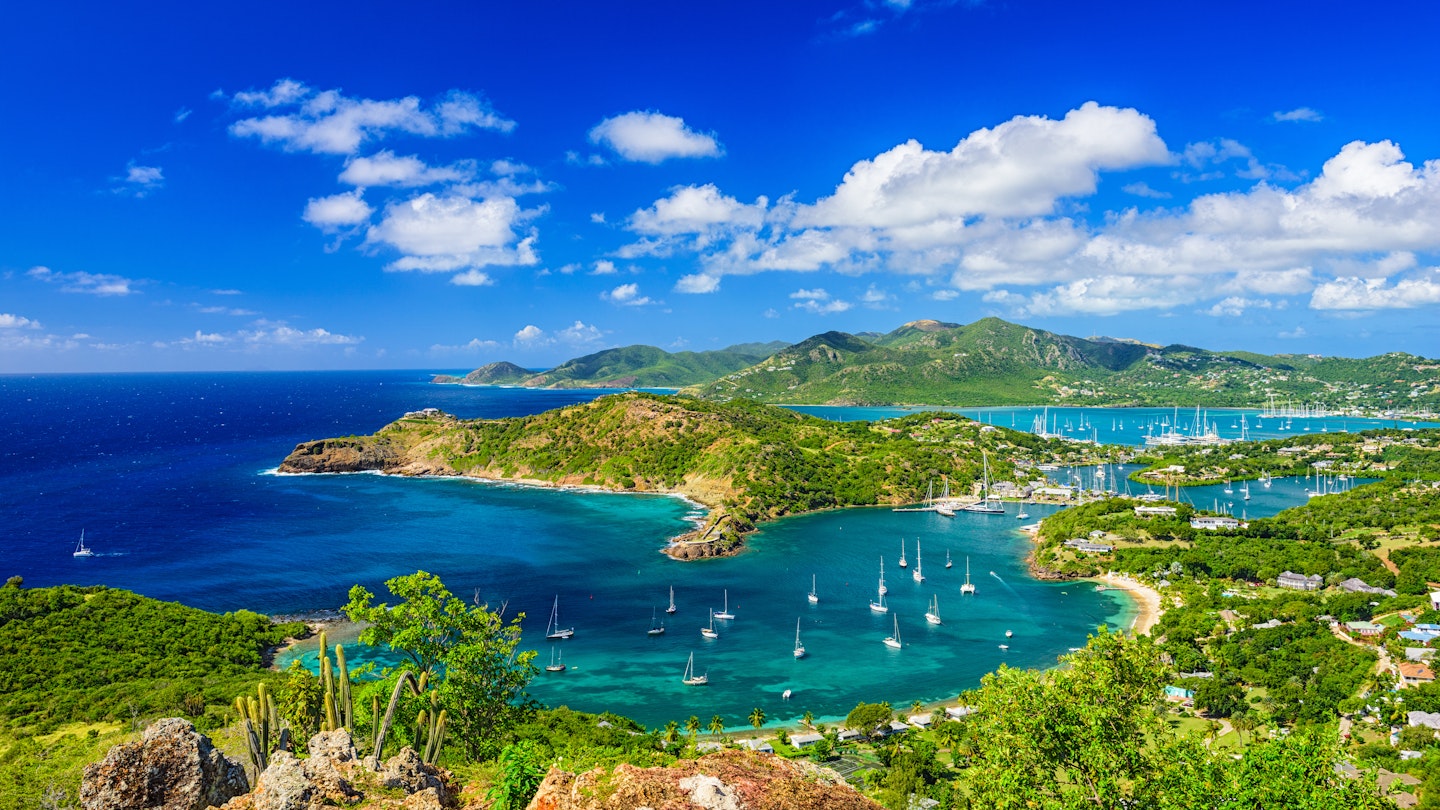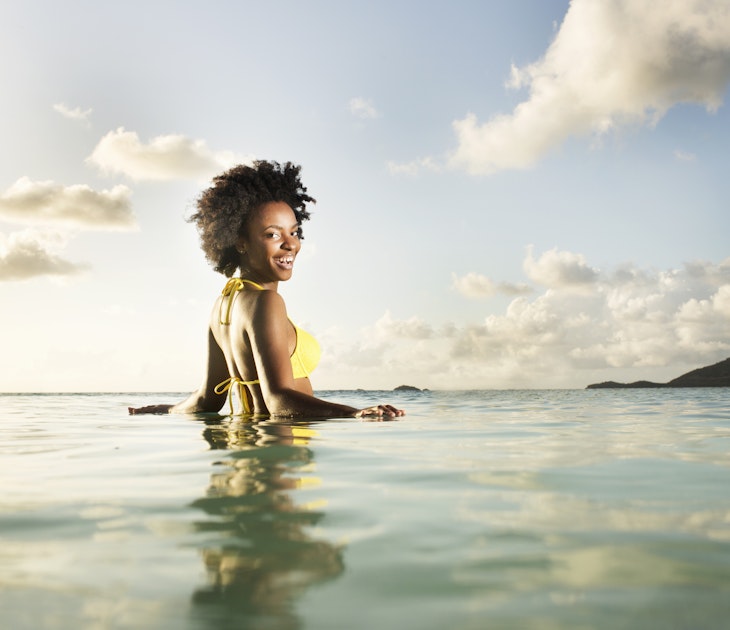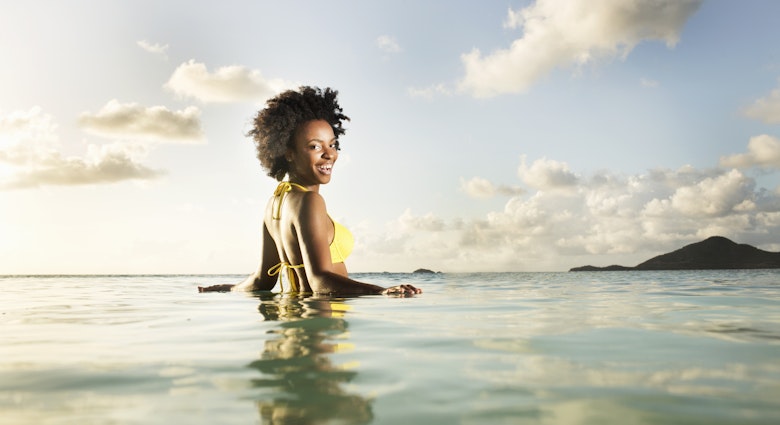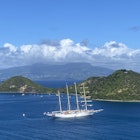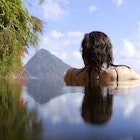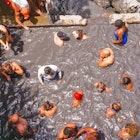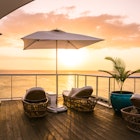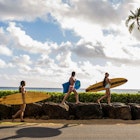Antigua and Barbuda’s hundreds of beaches and steady trade winds guarantee a blissful daily dose of sea, sand and sailing along secluded coves and historic harbors. But there are a myriad of additional ways to enjoy these sister islands’ varied and scenic landscape, on and off the beach.
From venturing inland to hike Antigua’s newest rainforest nature reserve to snorkeling off protected islets and birding on mangrove-rich Barbuda, here's how to explore the islands' most popular ecotourism hotspots.
Editor's note: during COVID-19 there are restrictions on travel. Be sure to check the latest guidance before departure, and always follow local health advice.
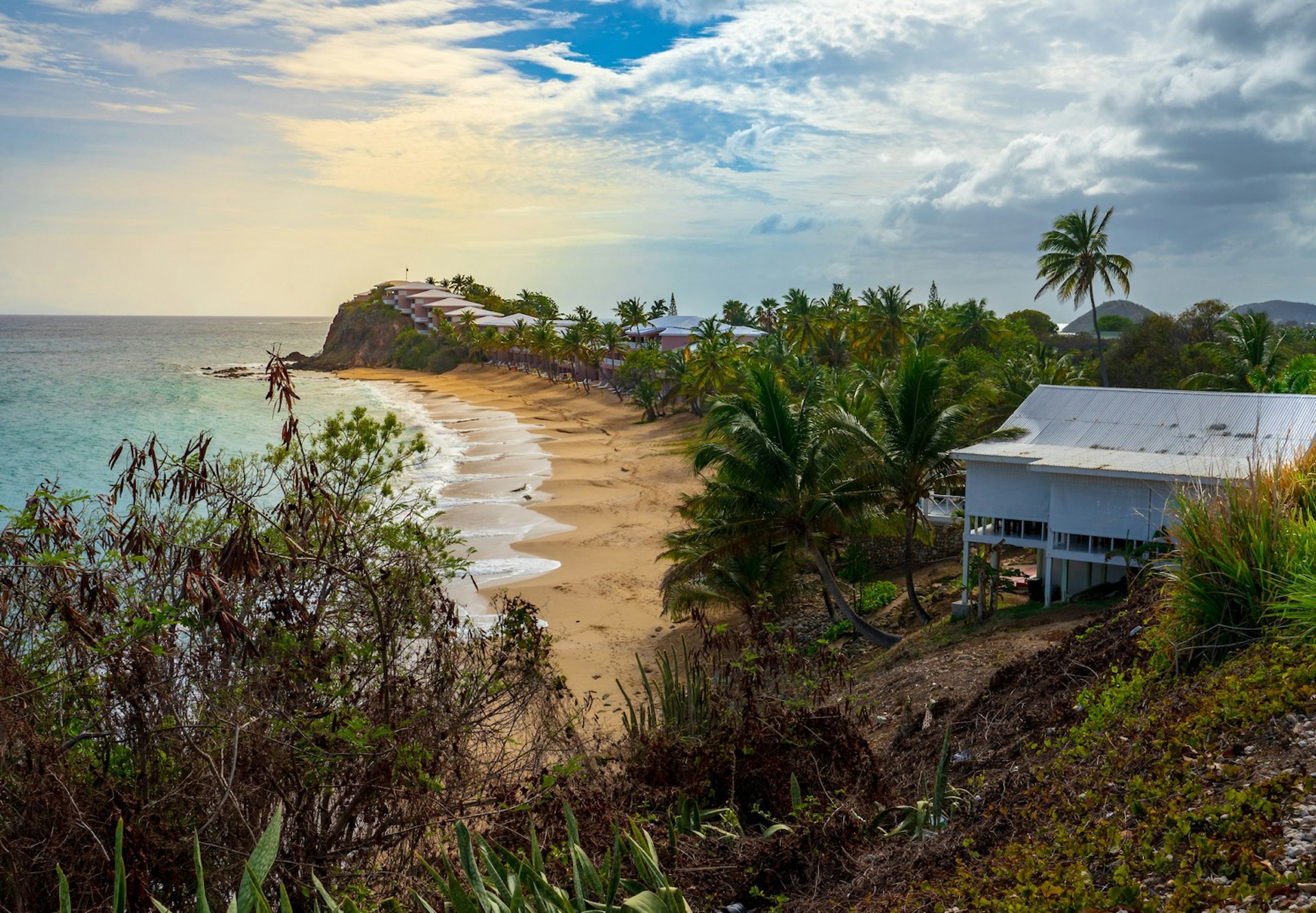
Hit the hiking trails at Wallings Nature Reserve
Antigua’s newest designated protected area, Wallings Nature Reserve, opened in October 2018 and is the first community-managed national park in Antigua and Barbuda. Located in John Hughes Village in the heart of the island’s southwestern green interior, the reserve forms the largest remaining forest tract on Antigua. Wallings is also an important watershed area and home to a 19th century-built water reservoir.
Boasting some of the most incredible views over Antigua and neighboring islands, 268 acres out of a total of 1680 are now accessible through a network of trails of varying difficulty. On your hike, you can spot up to 40 tree species, including the coccoloba pubescens used in Antigua’s local dish ducana (sweet potato dumpling), as well as migratory birds.
If you’re moderately in shape, opt for the guided, 2.5-hour Signal Hill Hike and take a pair of binoculars with you. The part-flat, part-steep hike will lead you towards two spectacular vistas – the first overlooking Redonda, Montserrat and Guadeloupe on a clear day, and the second revealing Antigua’s St. John’s Harbour, Mount Obama and surrounding isles with a 365-panoramic view.
The most impressive aspect of Wallings Nature Reserve, aside from its breathtaking views, is that it’s entirely managed by staff and volunteers from the John Hughes community. This means all income from park entrance fees and guided tours directly support the community and the park.

Snorkel and picnic at Great Bird Island
Located just under 2 miles off Antigua’s northeastern coastline, Great Bird Island is one of several wildlife-rich, uninhabited offshore islets forming part of the Northeastern Marine Management Area, the largest marine reserve in Antigua.
At 20 acres, this small caye is a popular daytime escape for white-sand beaches and complete solitude (well, except for the seabirds). Swim off the beach and you’ll spot a variety of tropical fish around surrounding corals.
Refuel with drinks and a beachside picnic before hiking for five minutes along a rocky trail to reach the scenic overlook. Take in the panoramic views over all the surrounding isles in this marine reserve area, while keeping an eye out in the bushes for the non-venomous Antiguan racer snake – one of the rarest snake species in the world. Antigua Nature Tours offers small-sized boat tours to the island, combining snorkeling, kayaking and light hiking.
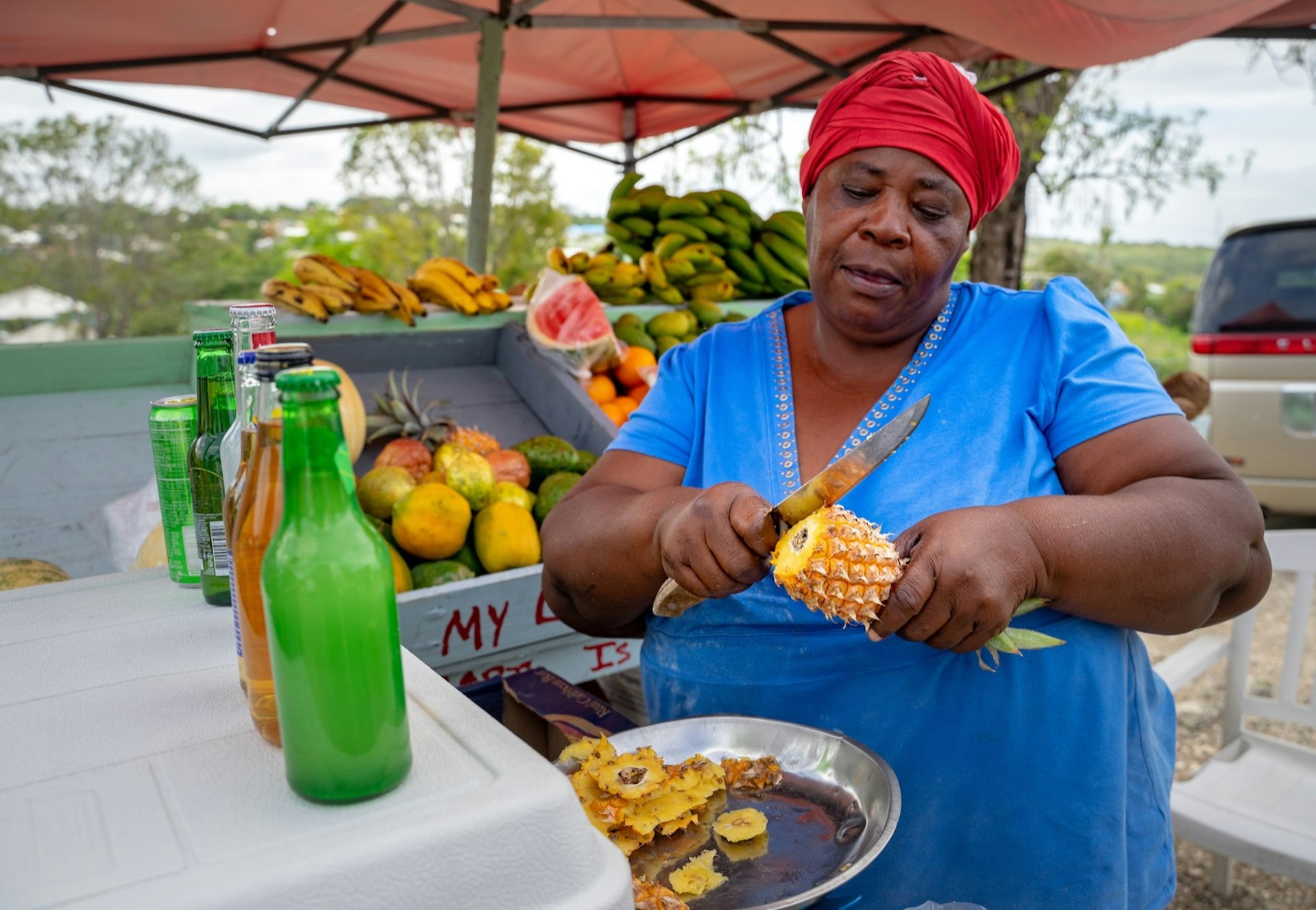
Hop on an island safari and explore the interior
For a solid glimpse of Antigua’s diverse landscape and coastlines, sign up for an open-side safari afternoon with Charles in Charge. You’ll go from Antigua’s breezy Atlantic Oceanside beaches and rugged cliffside all the way to the calm, palm-fringed Caribbean coastline, while passing through the island’s inland green corridor in the southwest.
Unlike some safari tours in the Caribbean, there are no voyeuristic visits to schools or villages. Instead, you’ll see the island as if you were driving in your own car – stopping at natural and historical sights for scenic points photo ops or sampling local snacks roadside, like the sweet Antiguan Black Pineapple.
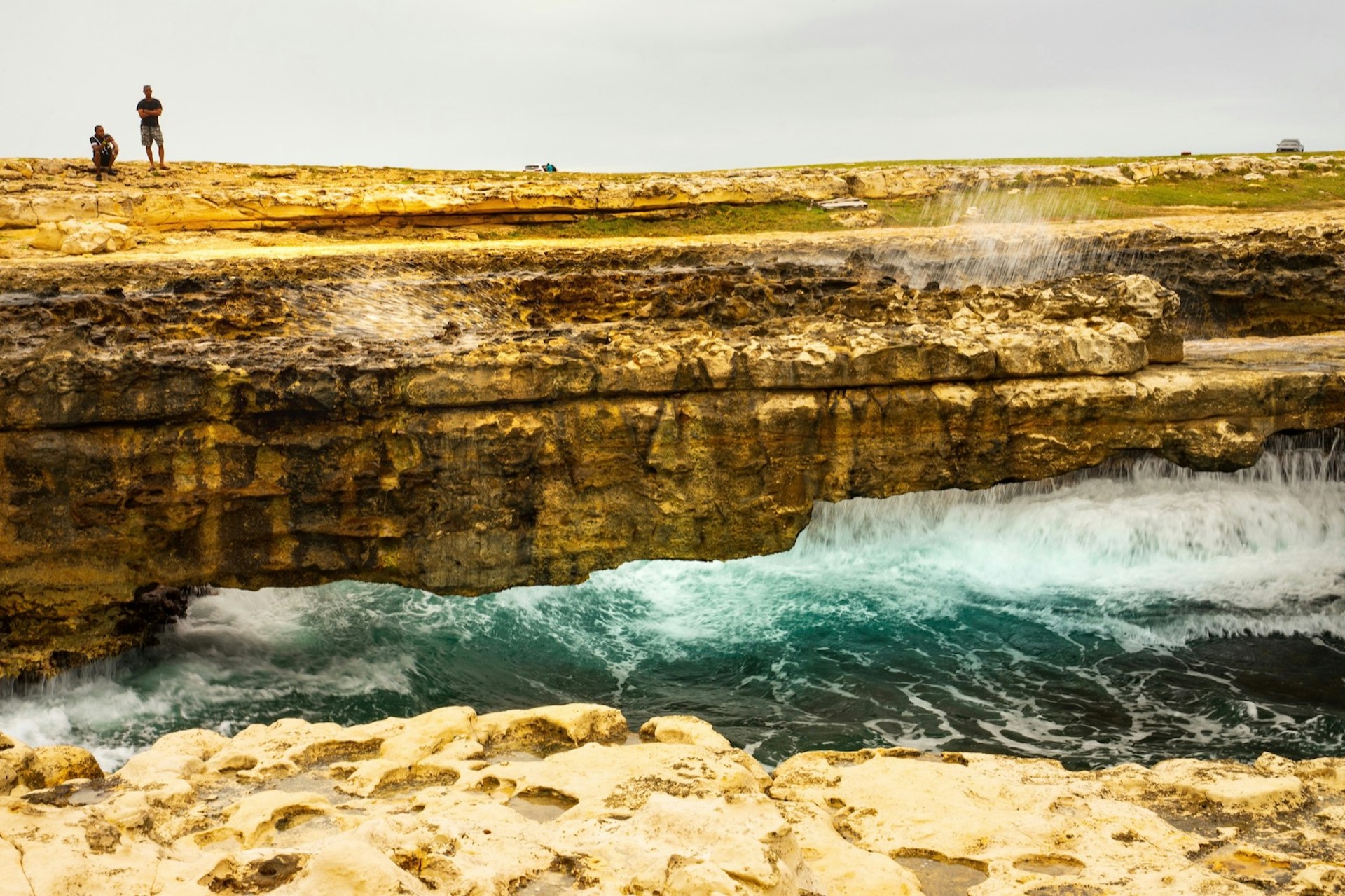
Glimpse the past at Devil’s Bridge National Park
Overlooking the Atlantic Ocean, on the northeastern tip of Antigua, Devil’s Bridge is one of the country’s geological wonders. A designated national park, this natural limestone arch was naturally formed over thousands of years. But it also holds historical significance to the island. Local lore says Devil’s Bridge is where enslaved West Africans leapt to their deaths rather than endure slavery on one of the 200 sugar cane plantations established by the British in Antigua.
Stand at a safe distance to view the spectacle of powerful waves crashing high over this rocky area and spitting through various, hidden blowholes. Devil’s Bridge is a chilling sight underneath the hot and hazy Antiguan sky.

Day trip to Barbuda
From its 10-mile long beaches and iridescent turquoise waters to its wildlife, Barbuda’s natural attractions have miraculously bounced back from the devastation of Hurricane Irma nearly two years ago. This secluded Caribbean island is receiving visitors again, and it’s a great time to contribute your tourism dollars to Barbuda’s recovering economy.
There’s plenty to keep you occupied on the Caribbean island for a day. Hop on a guided boat trip with Captain George Jeffrey to the island’s Frigate Bird Sanctuary, north of the Codrington Lagoon. Thousands of frigatebirds nest on red mangrove bushes at the largest frigate bird colony site in the Caribbean.
Go caving at Two Foot Bay and take in the Wild West scenery of cacti and giant rocks on Barbuda’s prehistoric eastern coastline. Cool off at Princess Diana Beach or River Beach, keeping an eye open for blankets of pink shells covering the shoreline in the summertime. Wrap up the day with a pre-ordered fresh catch lunch and house cocktails at the Art Cafe, a Barbudian family-owned bistro about a mile outside Codrington Village.
Hop on the Barbuda Express ferry which runs daily from Antigua to Barbuda, departing from St. John’s Harbour at 8:30am Monday through Saturday — except Wednesdays, departing at 6am — and returning from Barbuda at 4:30pm, weather permitting. You can sign up for the ferry’s organized island tours which match you with a local tour guide on Barbuda, or you can create a custom itinerary through Barbudaful.net. There are also car rental options to explore at your leisure.
Article first published in June 2019, and last updated in November 2020.
